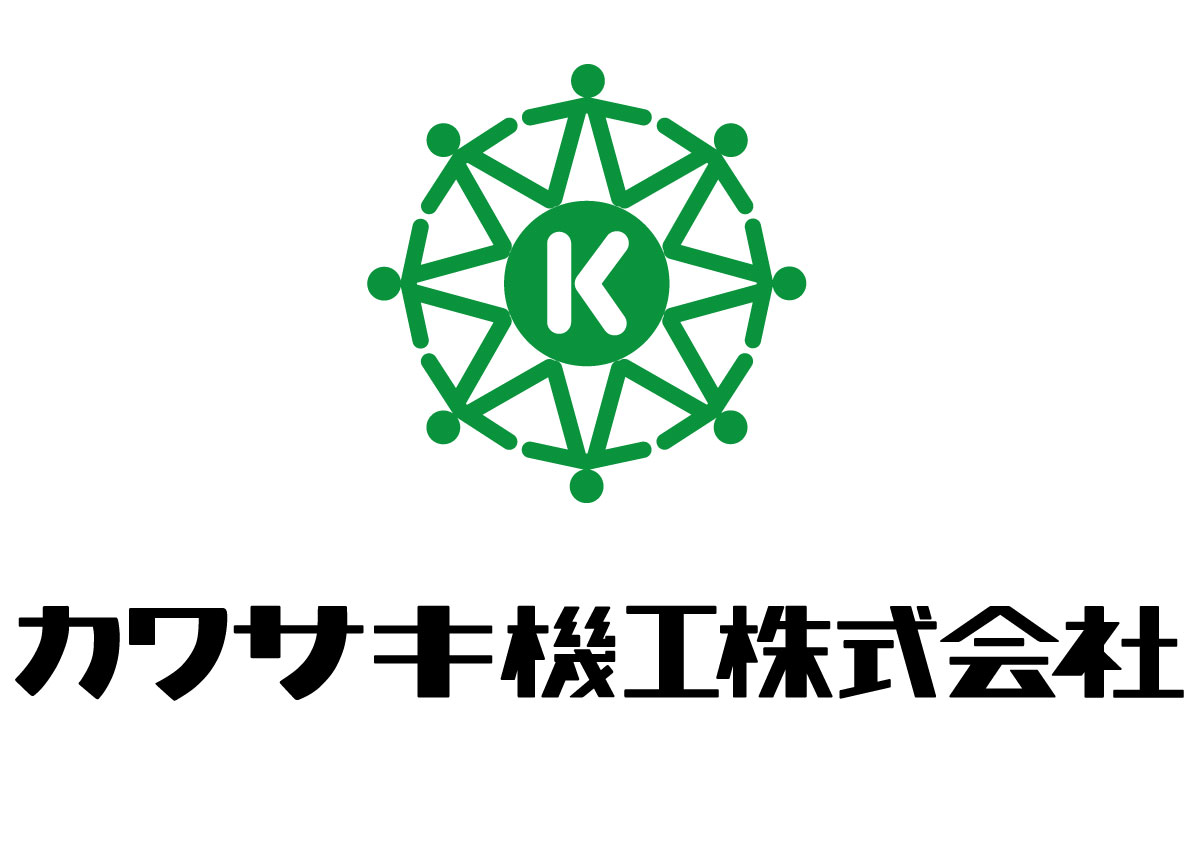
In this interview, by adopting SP5000X, Kawasaki Kiko Co., Ltd., a comprehensive manufacturer of tea production and harvesting machines with the top market share in this field successfully implemented a next-generation project. The project has competed in a single year instead of the expected two to three years. The company continues to make the utmost efforts to provide more delicious tea to people around the world.
Customer Story Key Figures
75% Down
Development time
Usual 3-year development time was reduced by 75% to around 1 year.
200% UP
Operability
Operability improved by 200% by using a bright display and remote monitoring.
30% down
Maintainance time
Maintenance efficiency increased by 30% through HMI specialist support.
The SP5000X with the new KJM6 passenger-type multi-purpose management machine
This passenger-type multifunctional management machine can perform multiple tea plantation management tasks such as fertilizing and cultivation work. Unlike conventional models, all hydraulic equipment and actuators electronically control in anticipation of future autonomous operation. The SP5000X which mounted in front of the driver's seat. It is utilized as an operating terminal and dashboard monitor when an operator is on board. It also works as an IoT edge device for maintenance, communication management, and connecting with ECUs. Autonomous driving capabilities are currently under development based on GNSS positioning information from satellites such as Michibiki.
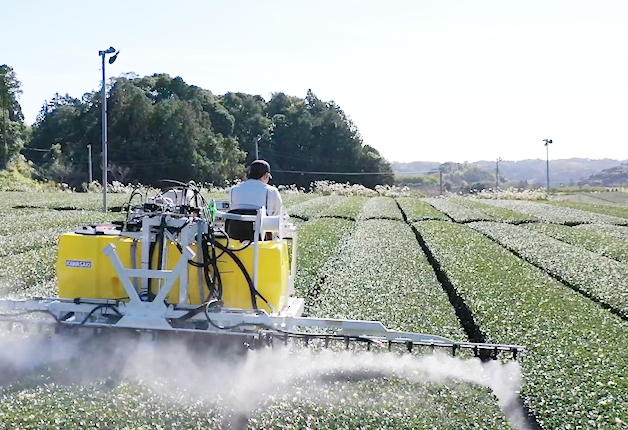
The challenges of next-generation development
Next-generation machines must be more efficient and autonomous. In the past, devices used microcontroller-integrated LCD screens. However, we thought HMI would better suit switch operation and operation display. Pro-face HMIs are active in tea processing machines at tea plants so far. Based on in-depth knowledge and assets gained through this experience, we thought HMI could be useful in next-generation machines. However, machines in fields require 12V, while the standard HMI supports just 24V. Besides, screen visibility generally worsens outdoors. So we worried that the adoption of HMI in fields would be difficult. Furthermore, the latest IoT makes use of the cloud, but incorporating such functionality in a machine running in fields would likely be a significant challenge. Development speed was another issue. Standard projects usually took two to three years to complete, and control systems were particularly time-consuming because we produce them in-house.
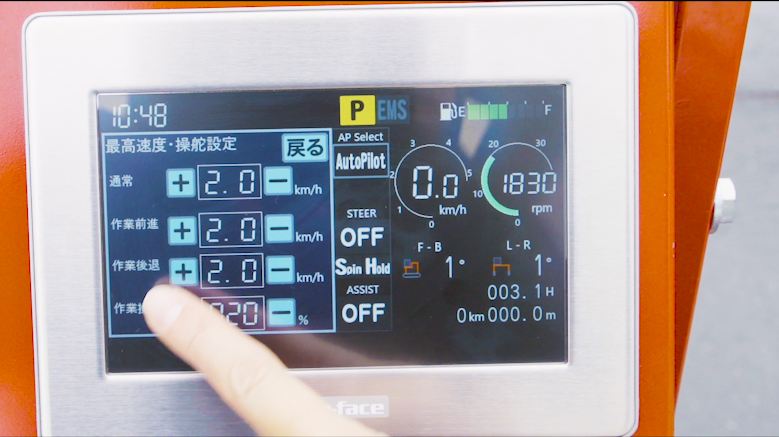
Why we chose the SP5000X
An essential factor was outdoor visibility. When we borrowed a sample unit, we realized the visibility was excellent. We found that the high brightness and resolution of Pro-face HMI could display the necessary information even on small screens in the outdoor situation. Another reason we chose the SP5000X was that it supports CAN communication (J1939), which is a significant advantage. We needed it to connect ECUs with the HMI. That supports as an option. Furthermore, the power supply specification is compatible with 12V. These three big points pretty much convinced us. One more surprisingly important point was sales and support. When we asked them for certain features, they quickly responded with excellent suggestions. We received substantial support and feel confident we can produce extremely reliable, productive machines when working with Pro-face. Pro-face HMI allowed our engineers to imagine how our customers will use the system. Details about how to do this and how to do that became much clearer. It may have been the most significant reason all for choosing the SP5000X.
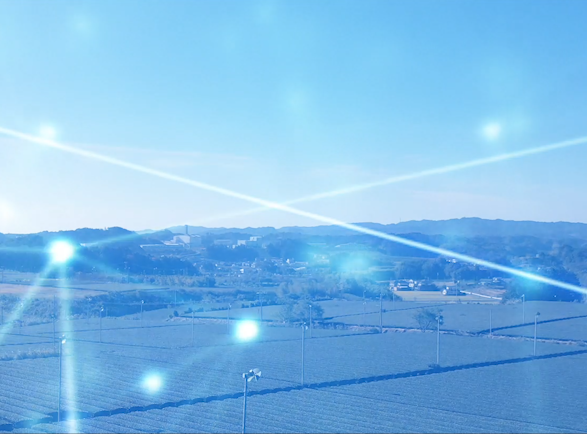
Effects and benefits
The SP5000X mainly serves as an interface for setting parameters. However, it is also an essential device for data management and connecting to the cloud. Since all information about the machine can display on the SP5000X, the HMI should be considered the machine's central device. It is no exaggeration to say HMI is most essential for the new generation machine. By connecting the HMI with cloud service, we did not have to develop IoT-related elements. It significantly accelerated development and was an advantage that allowed us to complete the project from scratch in as little as a year. By collecting and analyzing accurate information from the KJM6 passenger-type multi-purpose management machine, which plows and fertilizes fields, it became possible to distribute fertilizer based on the rate of operating correctly. When applied to pest control, the system also makes it possible to reduce the use of pesticides in fields. Now amounts of pesticide fix in most of the area. However, we expect more appropriate measures of pesticide in each area based on optimized management, harvesting, and pest data.
Future outlook
We plan to take advantage of our know-how in tea processing plants and production systems to enhance and develop products that collect and consolidate all kinds of information. By transmitting accurate data on the status and quality of leaves in tea fields to the production line, we will build systems that more produce high-quality tea leaves. Toward this end, customers need information terminals in tea plantations and will significantly benefit from equipment that uploads the data to the cloud. We believe these will be essential points for smart agriculture in the future. As a comprehensive manufacturer, we offer a wide range of products and hope to provide new systems and services that take advantage of these technologies. In Japan, most of our products are for matcha and green tea, but our plant tea machines are also used for black tea and oolong tea, and we will continue to export tea plant equipment throughout Asia. Currently, we are considering the expansion of our business worldwide, especially in the area of black tea. Since tea plantations are usually in mountainous regions, it would be very convenient to monitor the status of machines when desired from production facilities via smartphone or tablet. Remote machines in Japan and around the world could be checked without traveling overseas. Since Pro-face offers a wide range of remote solutions and is expanding across the globe, we think Pro-face HMI will be necessary for our future business.
<About tea processing factory with Pro-face HMIs>
Kawasaki Kiko Co., Ltd.
Outdoor HMI SP5000X Series
- High brightness liquid crystal panel (1000cd/m2)
- UV Protection (Cut UV rays by 99% (380nm))
- Vibration/Shock Resistance approximately 2 to 2.7 times
- Operating Temperature: -30℃ to 70℃ (-22 to 158 °F)
- IP66F, IP67F, Type 4X (indoor and outdoor use), Type 12, Type13
- 12 to 24Vdc
- High brightness liquid crystal panel (1000cd/m2)
推荐的文章和视频
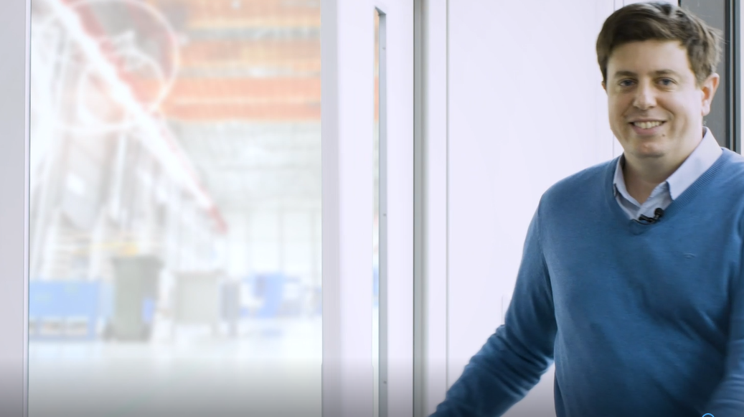
[视频] 如何利用人机界面中心架构理念(HMI Centric)给生产赋能?


